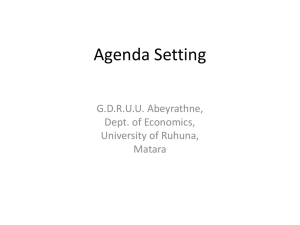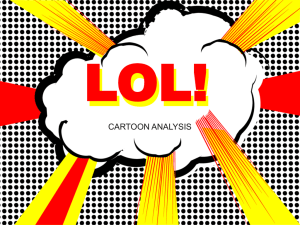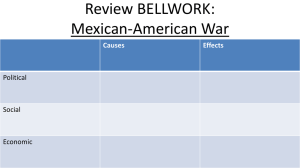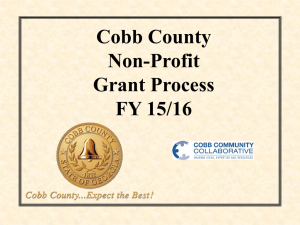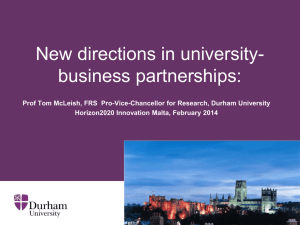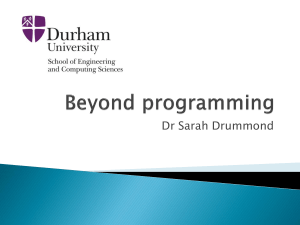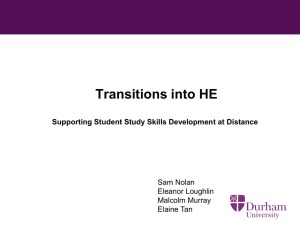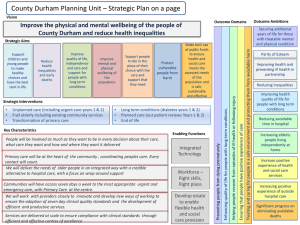The superbugs are coming!
advertisement
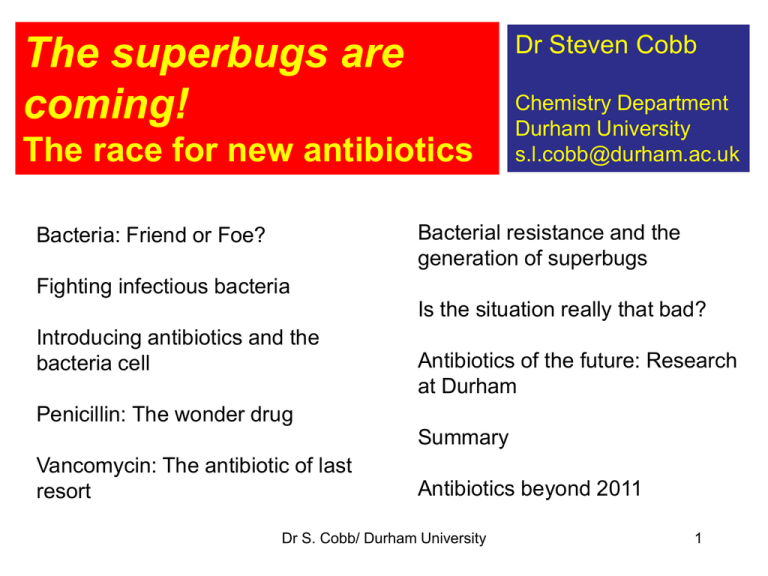
Dr Steven Cobb The superbugs are coming! The race for new antibiotics Chemistry Department Durham University s.l.cobb@durham.ac.uk Bacterial resistance and the generation of superbugs Bacteria: Friend or Foe? Fighting infectious bacteria Is the situation really that bad? Introducing antibiotics and the bacteria cell Antibiotics of the future: Research at Durham Penicillin: The wonder drug Summary Vancomycin: The antibiotic of last resort Antibiotics beyond 2011 Dr S. Cobb/ Durham University 1 Bacteria: Friend or Foe? Infectious bacteria (bad bacteria) Probiotic bacteria (good bacteria) Dr S. Cobb/ Durham University 2 Fighting infectious bacteria Cure Prevention Rest Time Antibiotics (drug molecules) Dr S. Cobb/ Durham University 3 What are antibiotics? Antibiotics are compounds that can be used to kill bacterial cells. Sulfonamide drugs (late 1930s) Penicillin (-lactams, 1940s) Vancomycin (late 1950s) Dr S. Cobb/ Durham University 4 Antibiotic targets The cell is the most basic building block for life in all organisms. Structural differences between cell types (e.g. human and bacteria) can be used to design selective drugs. This has been carried out to great effect in the development of antibiotics. Dr S. Cobb/ Durham University 5 Human and bacterial cells Normal human cell Plasma Membrane (no cell wall) Dr S. Cobb/ Durham University 6 Antibiotics and the magic bullet effect Normal cells Bacteria Antibiotic Bacteria are killed and the normal cells left untouched Dr S. Cobb/ Durham University 7 Penicillin: The wonder drug of the 20th century The Nobel Prize in Physiology or Medicine 1945 Sir Alexander Fleming, Ernst Chain, Sir Howard Florey Ernst Chain Howard Florey Dr S. Cobb/ Durham University 8 Penicillin’s mode action against bacteria Dr S. Cobb/ Durham University 9 Penicillin’s mode action against bacteria Dr S. Cobb/ Durham University 10 Penicillin: The wonder drug of the 20th century Advantages Relatively inexpensive (compared to alternatives). In general non-toxic to patient. Disadvantages Not active against a broad spectrum of bacteria and not effective against Gram-negative bacteria. Unstable to acidic conditions thus can not be given in oral form. Simple mutations in bacteria can give rise to penicillin resistant strains. Can cause allergic reactions in some people (1-4% cases) which can be very serious. Fatality rates however are low 0.001%. Dr S. Cobb/ Durham University 11 Vancomycin: The antibiotic of last resort Scientists realized that Vancomycin was active against bacterial strains that had developed resistance to Penicillin-based drugs. Fast tracked by the FDA and since 1958, it has been a key player in the war against bacterial pathogens. It is commonly used when other drugs fail and thus it is widely known as the “antibiotic of last resort”. Vancomycin is a glyco-peptide (sugar-peptide) that was first isolated from Borneo jungle soil samples. Dr S. Cobb/ Durham University 12 Vancomycin: Mode of action Dr S. Cobb/ Durham University 13 Antibacterial resistance and the generation of superbugs Dr S. Cobb/ Durham University 14 Penicillin and antibacterial resistance Emergence of bacterial resistance to Penicillin detected as earlier as 1948 Dr S. Cobb/ Durham University 15 What causes bacterial resistance? Dr S. Cobb/ Durham University 16 The emergence of superbugs (MRSA) 1961: Emergence of bacterial resistance to Methicillin (Methicillin Resistant Staphylococus aureus, MRSA) Dr S. Cobb/ Durham University 17 What is different about MRSA? The enzyme that Methicillin targets is modified so that it can no longer fit in the active site ( = no inhibition of enzyme). Dr S. Cobb/ Durham University 18 The emergence of superbugs (VRSA) Normal peptide sequence in vancomycin sensitive bacteria Mutated peptide sequence in Vancomycin resistant bacteria Dr S. Cobb/ Durham University 19 Superbugs, is the situation really that bad? No effective drugs left Some drugs still effective and more Dr S. Cobb/ University on Durham the way 20 Superbugs, is the situation really that bad? Lots of drugs Dr S. Cobb/ Durham University Not so many 21 Superbugs, is the situation really that bad? Only three of the approved antibiotics in the last 10 years (25% of total) have of new mode of action Dr S. Cobb/ Durham University 22 The next generation of antibiotics Ideally any new antibiotic must have: 1. New mode of action so it can be used against MRSA etc 2. Non-toxic to human cells (magic bullet effect) http://en.wikipedia.org/wiki/List_of_antibiotics In my group we want to develop a new class of antibiotics that are derived from our bodies own defence system to infection, the innate immune response. Dr S. Cobb/ Durham University 23 Innate immunity What happens when you cut your finger? How does your body fight potential infection? Dr S. Cobb/ Durham University 24 Innate immunity What happens when you cut your finger? How does your body fight potential infection? Innate immunity – fast, brute force, no real plan, not coordinated Adaptive immunityantibodies, highly effective, calculated Dr S. Cobb/ Durham University 25 The innate immune response in action The S. aureus bacteria grows but your skin releases a compound as part of the innate immune response that can kill the E. coli bacteria. Dr S. Cobb/ Durham University 26 The innate immune response in action Your skin releases a compound as part of innate immune response that can kill E. Coli bacteria. The compound is a peptide that is part of a range of antimicrobial peptides that the body can produce as a first line defence against infection. Dr S. Cobb/ Durham University 27 Antimicrobial peptides Positively charged peptide molecules (charge typically between +2 to +9). They range in size from 12 to 100 amino acids in length. Extremely potent (nM) against a broad spectrum of bacteria including drug resistant strains (MRSA and VRSA) due to a different mode of action. Dr S. Cobb/ Durham University 28 Antimicrobial peptides Dr S. Cobb/ Durham University 29 Antimicrobial peptides and their selectivity for bacteria Dr S. Cobb/ Durham University 30 Antimicrobial peptides and their mode of action http://www.youtube.com/watch?v=9-HegAO4T0A Dr S. Cobb/ Durham University 31 Our research on antimicrobial peptides Antibacterial Surfaces New Drugs Dr S. Cobb/ Durham University 32 Summary Many of the antibiotics developed in the 1930s and 1940s are no longer active against the bacteria that they were designed to target. New strains of superbugs have been emerging since the 1960s. At present MRSA is the main problem, but VRSA represents a much bigger problem on the horizon. At the present time we are winning the fight against bacteria, but in the next 10 years……. Dr S. Cobb/ Durham University 33 Antibiotics beyond 2011…… The NHS The drug companies The academics The future……… Dr S. Cobb/ Durham University 34 I wonder how she’ll react when I tell her I need to got to the toilet again! This will keep you safe from that pesky VRSA. Going to school 2020? Dr S. Cobb/ Durham University 35 The superbugs are coming! The race for new antibiotics Any questions? Dr Steven Cobb Chemistry Department Durham University s.l.cobb@durham.ac.uk Dr S. Cobb/ Durham University 36
